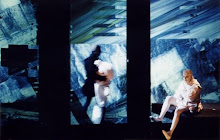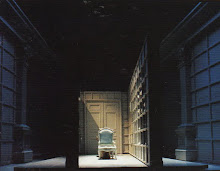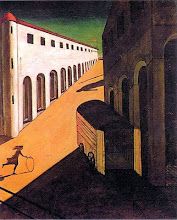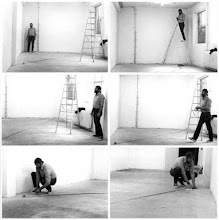The idea of individuals within a built environment and their relationship is complex. This project tries to explain the individuals' uncertain situation of living in and being part of a city. It does so by showing an individual's actions through two different realities.
Descriptions:
- Individual: he represents anyone from a western society; he is anonymous; he needs to escape from a reality that he can't control; he needs to reassure his position over a reality he thinks he can control.
- Reality1: it is an enclosed space, sealed, neutral, basic; it is represented as a white cube (room); it is a refuge, an escape from an outside reality.
- Reality2: it is a city, a place where the individual loses his control over it, he feels lost, confused, he has fears, frustrations, etc.; its spatial perception is through the representation of the light emitted from the movement/flux/energies of people, vehicles, machines, etc. (anything that performs an activity within the city); this representation visualizes an architecture.
Story:
An individual is in a room (Reality1); he has the necessity to measure and analyse continuously and repetitively the space and his position in relation to it. He thinks he has control over this reality, he knows where he is.
Slowly the room loses its spatial references, the lines that define the space start disappearing: edges, corners,... (but as long as there is one corner left the individual can still control where he is in relation to the initial space). Eventually the last corner disappears and he finds himself in an infinite white space.
He starts walking in a direction, hoping to find a 'place'.
...
Notes for Reality2: the individual has the impression of having been there before (introduction of cognitive mapping of spacial memories); he believes he belongs there, he is part of a larger scheme...
Project 002 will be developing Reality1.











